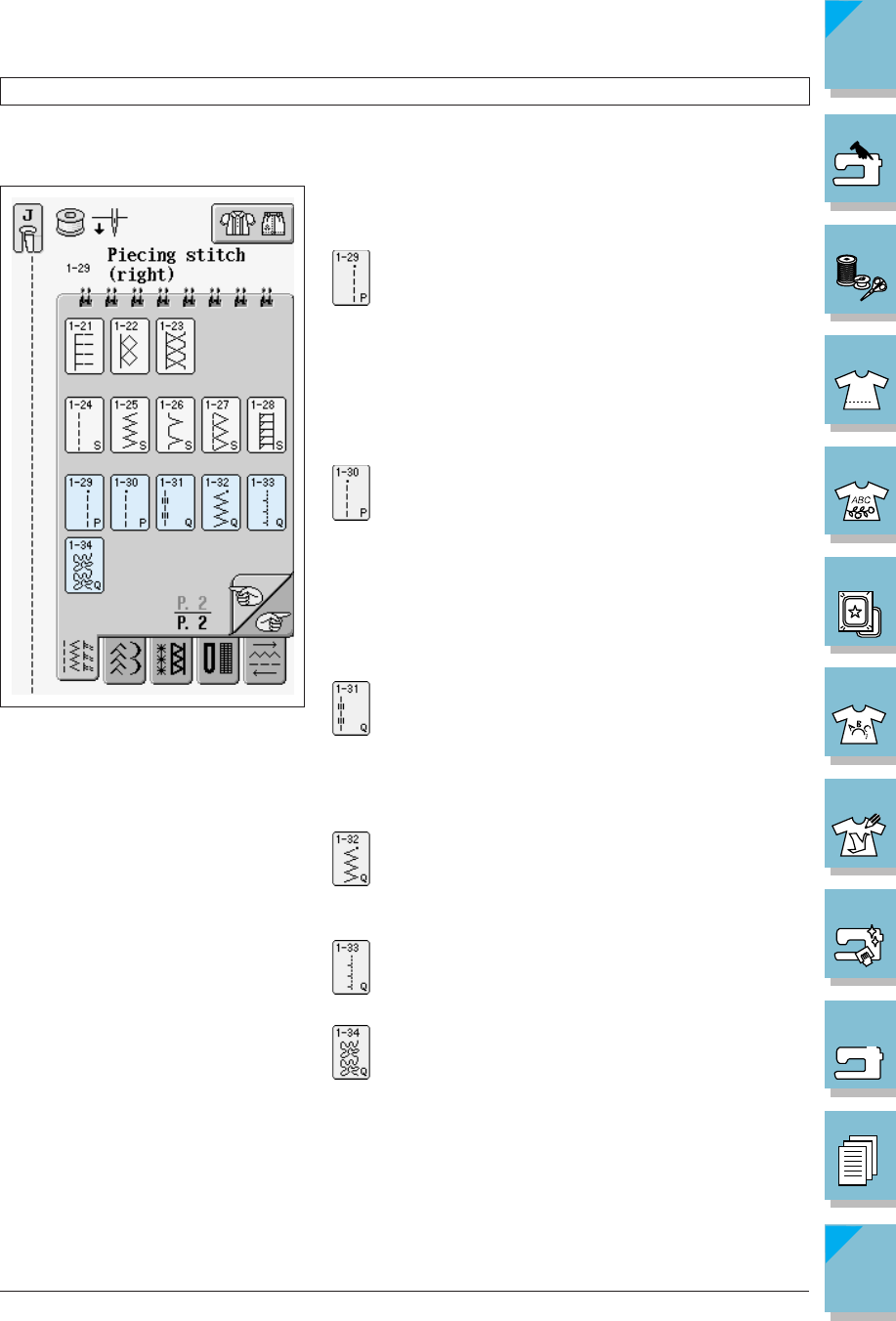
3-28 Sewing Utility Stitches
1 —
2 —
3 —
4 —
5 —
6 —
7 —
8 —
?
!
9 —
CONTENTS
Index
Quilting
You can make beautiful, quilts quickly and easily with this machine. When making a quilt, you
will find it convenient to use the knee lifter and foot controller (see pages 1-6, 1-7) to free your
hands for other tasks.
If there is a “P” or “Q” at the bottom of the key display, the
indicated stitch pattern is intended for quilting.
Piecing straight stitch “RIGHT”
Straight stitch for piecing. The default stitch length is 1.6
mm (1/16 inch). Default stitch width (needle position) is
5.5 mm (7/32 inch). The stitch is set short to keep the
stitching from coming loose during construction of the
quilt block.
This is a 6.5 mm (1/4 inch) seam allowance when placing
the edge of the fabric along the right edge of the presser
foot (see Illustration A on page 3-29).
Piecing straight stitch “LEFT”
Straight stitch for piecing. The default stitch length is 1.6
mm (1/16 inch). Default stitch width (needle position) is
1.5 mm (1/16 inch). The stitch is set short to keep the
stitching from coming loose during construction of the
quilt block.
This is a 6.5 mm (1/4 inch) seam allowance when placing
the edge of the fabric along the left edge of the presser
foot (see Illustration B on page 3-29).
Hand look quilting stitch
You can create the appearance of a hand quilted look by
using transparent nylon thread in the needle and bobbin
thread matching the color of the quilt. When using with
the nylon thread, strengthen the upper thread tension.
Use this stitch for quilting small to large projects.
Quilting appliqué zigzag stitch
Use this stitch to appliqué quilt blocks, garments, etc. Press
the “Reverse/Reinforcement Stitch” button to sew rein-
forcement stitches at the beginning and end of appliqué.
Quilting appliqué stitch
Use this stitch for “invisible” appliqué or attaching bind-
ing.
Quilting Stippling stitch
Use this stitch to quilt small areas such as vests, jackets,
pillows, etc.


















